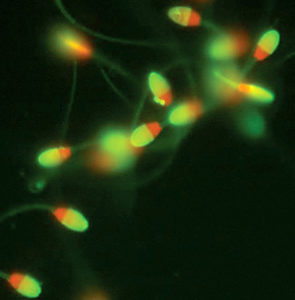
As a premier center for all activities related to equine reproduction, our program has established an international reputation for excellence in areas ranging from the diagnosis and treatment of reduced fertility in stallions to preservation of semen to development of assisted reproductive technologies for maximizing reproductive performance. The resulting developments and discoveries have had a phenomenal impact on the equine breeding industry.
Past Accomplishments:
- Determination of laboratory measures that reliably predict fertility
- Development of methods to accelerate sperm capacitation
- Optimizing the quality of semen extenders to maximize sperm viability
- Improving techniques for cooling and freezing of semen
- Development of sperm-enhancement and low-dose insemination techniques
- Characterizing hormonal/cellular changes associated with testicular degeneration
- Creation of record-analysis systems to accurately quantify fertility of stallions
- Improved methods for intracytoplasmic sperm injection and embryo culture
- Nuclear transfer (cloning) for the preservation of genetics
- Diagnosis and treatment of subfertility/infertility arising from testicular or epididymal dysfunction
- Development of molecular probes to aid in predicting fertility
- Implementation of methods to delay age-related testicular degeneration
- Improvement of methods for semen preservation
- Intensified study of the relationship of semen quality to fertility
- Effects of medications and environmental factors on semen quality and testicular function
- Gamete manipulation (intracytoplasmic sperm injection) with semen from subfertile stallions
- Methods to increase the efficiency of nuclear transfer (cloning)
Facilities:
The equine reproduction facilities at Texas A&M University set the standard for the industry. The facility currently has a spacious and safe breeding area designed for either natural mating or artificial breeding procedures. The adjacent laboratories contain state-of-the-art instrumentation, ranging from phase and fluorescent microscopes, micromanipulators, and computerized sperm motility analyzers, to flow cytometers and the latest equipment for cryopreservation.
